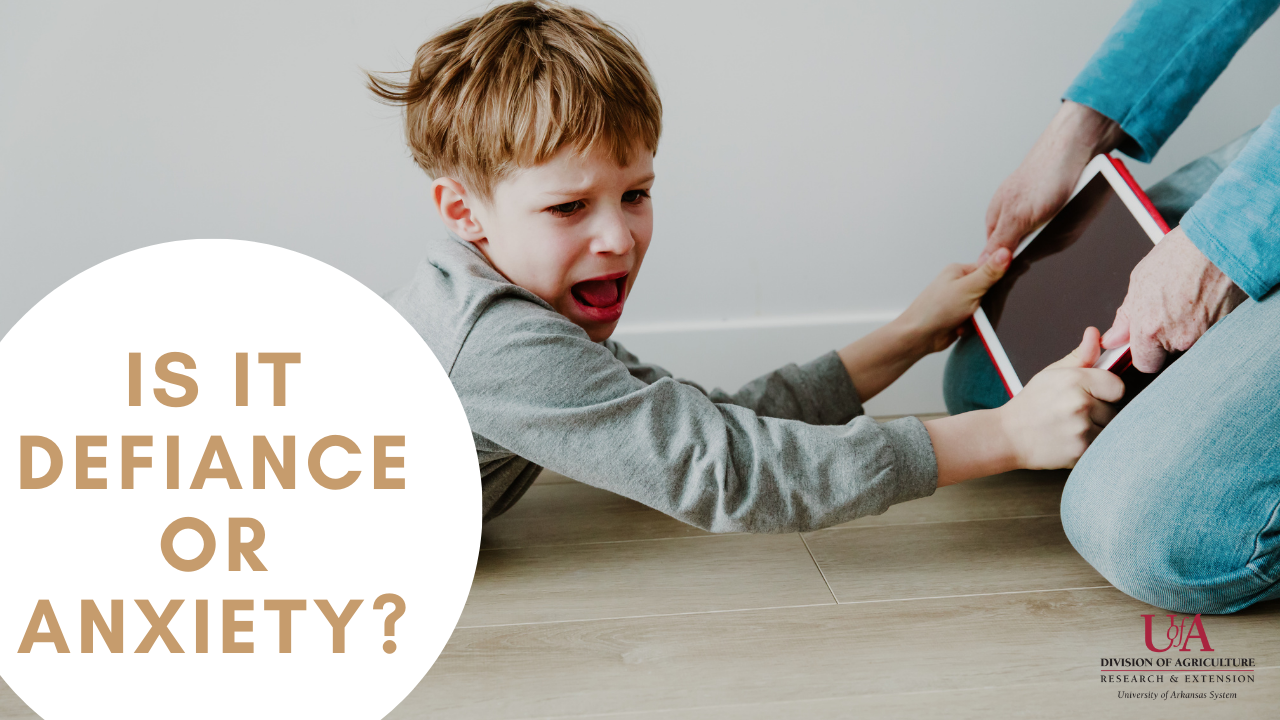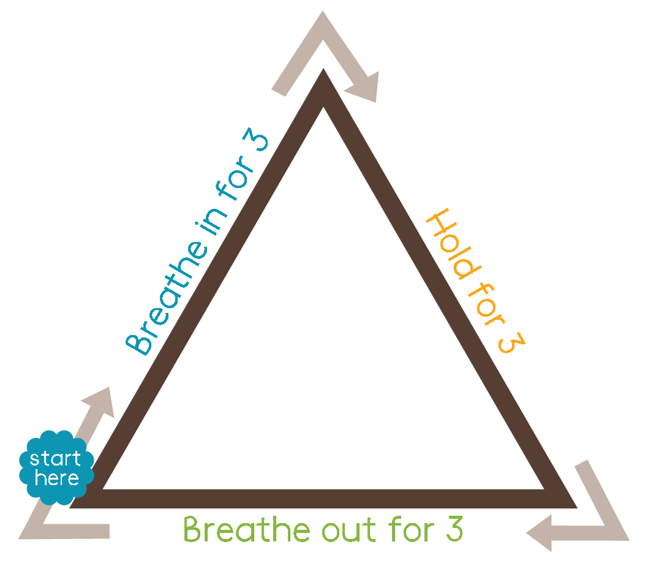Contact
Assistant Professor-Family Life Specialist
Phone: (501) 671-2202
Email: bschrick@uada.edu
University of Arkansas System Division of Agriculture
Cooperative Extension Service
2301 S. University Avenue
Little Rock, AR 72204

Is It Defiance or Anxiety?
Our brains are wired to protect us from threats by changing how our bodies react when we think we’re in danger. Fight, flight, and freeze responses are necessary tools our brains have developed to help us stay safe. But what happens when we ARE safe but our brains think we aren’t?
What is anxiety?
Anxiety is simply the brain’s way of responding to a situation that seems threatening. Our heart rate and breathing increase, we sweat, our pupils dilate so we can see better, and we may feel very tense. Usually, when we figure out that we are safe, we calm down and move on. It is the same for most children. However, some children have difficulty reading a situation correctly, and it causes them to feel threatened even though they are safe. This can cause reactions that are out of the child’s control and that seem inappropriate or even defiant to an adult.
What does anxiety look like?
For some, it looks like a deer in headlights “freeze” response and may lead to clinging or silence or lack of participation. For others, they may flee from the threat. A teacher's neutral action, like putting their hand on the child's shoulder to guide them from the door to the carpet for circle time, may feel threatening and cause them run or hide. For still others, an accidental bump from another child may be interpreted as aggressive and met with aggression or a “fighter’s” push or outburst.
Anxiety shows up in young children in a variety of ways, and it often shows up at a young age. A common symptom of lots of other mental health issues, anxiety can co-occur with many other disorders like panic attacks, separation anxiety, or conduct disorder. Children who experience early intervention with anxiety and improve coping can improve their overall long-term mental health outcomes.
How can I help my child?
Changing the way you respond to your child's behavior can go a long way in helping determine whether they are simply defying you or if they are anxious in a situation.
Simple tools like helping a child practice deep breathing, distracting them from something causing their anxiety, or offering a special transition into a new activity or between activities can have significant impact on a child’s ability to handle anxiety and your ability to manage their behavior.
Teaching kids to work through big feelings, even those related to anxiety, is an invaluable life skill. They will learn over time to manage big feelings and situations that make them feel scared.
The example below shows "Triangle Breathing." Teach your child to draw a triangle in the air, on their leg or tummy, or on the table or floor while they breathe in for a count of three, hold for a count of three, and breathe out for a count of three. If this tool works well for your child, you may want to draw or print out a triangle and tack it on the wall in a place they feel safe like their bedroom or a play area.

Patience is key.
Nothing worth learning and making a habit happens all at once. It is important to remember that kids need time to learn new skills. Teaching a child a breathing exercise or other way of managing anxiety or big feelings does not mean they will remember to do it every time they feel anxious. Even if an intervention works perfectly the very first time you try it, that doesn't mean it will work the second...or third...or fourth; but it may work the fifth. Having a toolbox of lots of strategies is your best bet.
Additional Resources:
Coping Strategies: /life-skills-wellness/personal-family-well-being/family-life-fridays-blog/posts/Unit%203%20Stress-Anxiety%20handouts.pdf
Dealing with Big Feelings: https://genmindful.com/blogs/mindful-moments/teaching-your-child-how-to-be-mad?fbclid=IwAR32oeII0E1BqIhN24Cfjp9NY3Ky1K8THAiIt61sdxazjU-TBT2u0KcF8qM